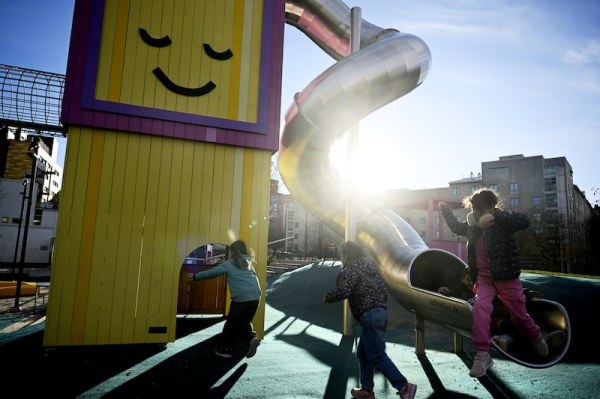Cost-saving shift to large daycare centres sparks debate in Finland

Photo: Antti Aimo-Koivisto / Lehtikuva
- Next Article Kela subsidies for private doctors cost more, achieve little
Finnish municipalities are increasingly replacing small daycare units with large, centralised centres in a drive to reduce maintenance costs, prompting debate about the impact on children and staff.
In Jyväskylä, five-year-old Jalo Jäppinen recently started attending a new 170-place daycare facility. The city opened the centre two weeks ago to replace an older, smaller unit with space for 100 children.
“I like playing here with my friends because there are such great jungle gyms,” Jalo said.
The new centre is part of a broader trend. Over the past few years, Jyväskylä has opened six large daycare facilities, each serving between 170 and 250 children. Two more are under construction.
According to Tarja Ahlqvist, head of early childhood services in Jyväskylä, the move is financially driven.
“One big building is considerably cheaper to maintain than several smaller ones,” she said.
Nationally, large daycare centres have become more common since 2010. The National Agency for Education reports that Finland had 30 centres with more than 250 children last year.
In Helsinki, the number of facilities with over 150 children rose from 28 in 2021 to nearly 40 in 2023. Three of these now house more than 250 children. The city has faced rising demand for early education places.
Reetta Vanhanen, Deputy Mayor of Helsinki, said larger centres offer logistical advantages, including improved access to special needs teachers and substitute staff. Still, she acknowledged that size does not suit every child.
“We will build new daycares on children’s terms: the youngest need spaces that feel safe,” she said.
Vanhanen added that many parents and staff members prefer smaller units because of the close-knit atmosphere. “People value the feeling that we all know each other,” she said.
Concerns about the shift to larger daycares include limited outdoor space, higher noise levels, and overstimulation, particularly during shared activities such as meals. Vanhanen said design plays a key role in addressing those challenges.
“With good design, large daycares can also provide children with an excellent environment,” she said.
Elina Fonsén, associate professor of early childhood education leadership at the University of Jyväskylä, said that while size matters, leadership quality is more critical.
“The larger the organisation, the more leadership is required to manage pedagogy well,” she said.
Fonsén cautioned that applying routines from smaller units directly to large centres may not work. She also warned against placing financial efficiency above children’s developmental needs.
“Children need time, familiar adults and pedagogically high-quality activities,” she said.
At Jyväskylä’s Lohikoski daycare, staff manage a tightly scheduled daily routine to reduce noise. Children move through the centre in coordinated groups.
Jalo’s father, Mikko Jäppinen, admitted to initial doubts about the new format.
“At first I was a little nervous about whether such big institutions could work, but we’ve been pleasantly surprised by how well everything functions,” he said.
Despite that, the broader discussion continues over how best to balance cost-efficiency with quality in early childhood education.
HT
- Next Article Kela subsidies for private doctors cost more, achieve little
Source: www.helsinkitimes.fi
